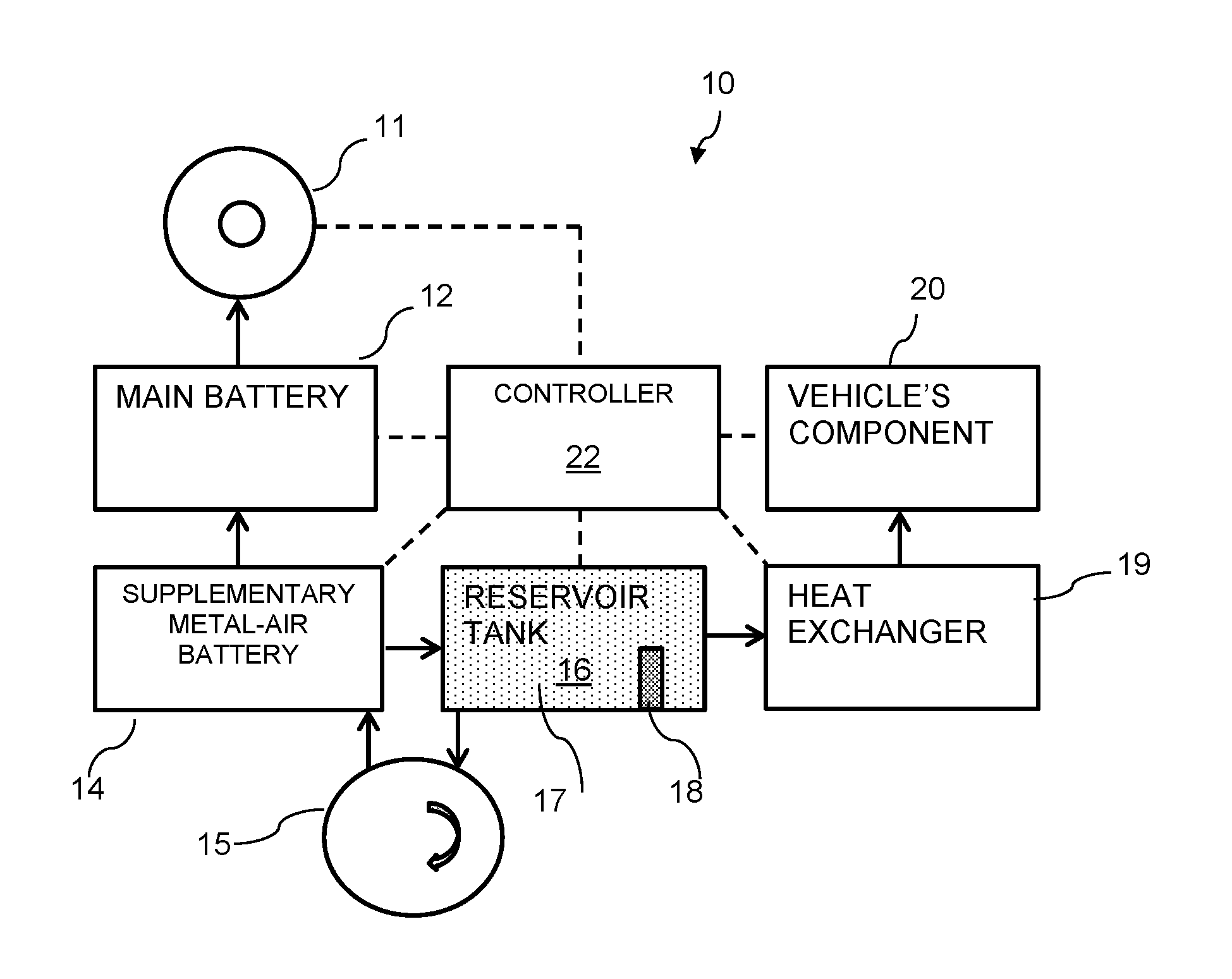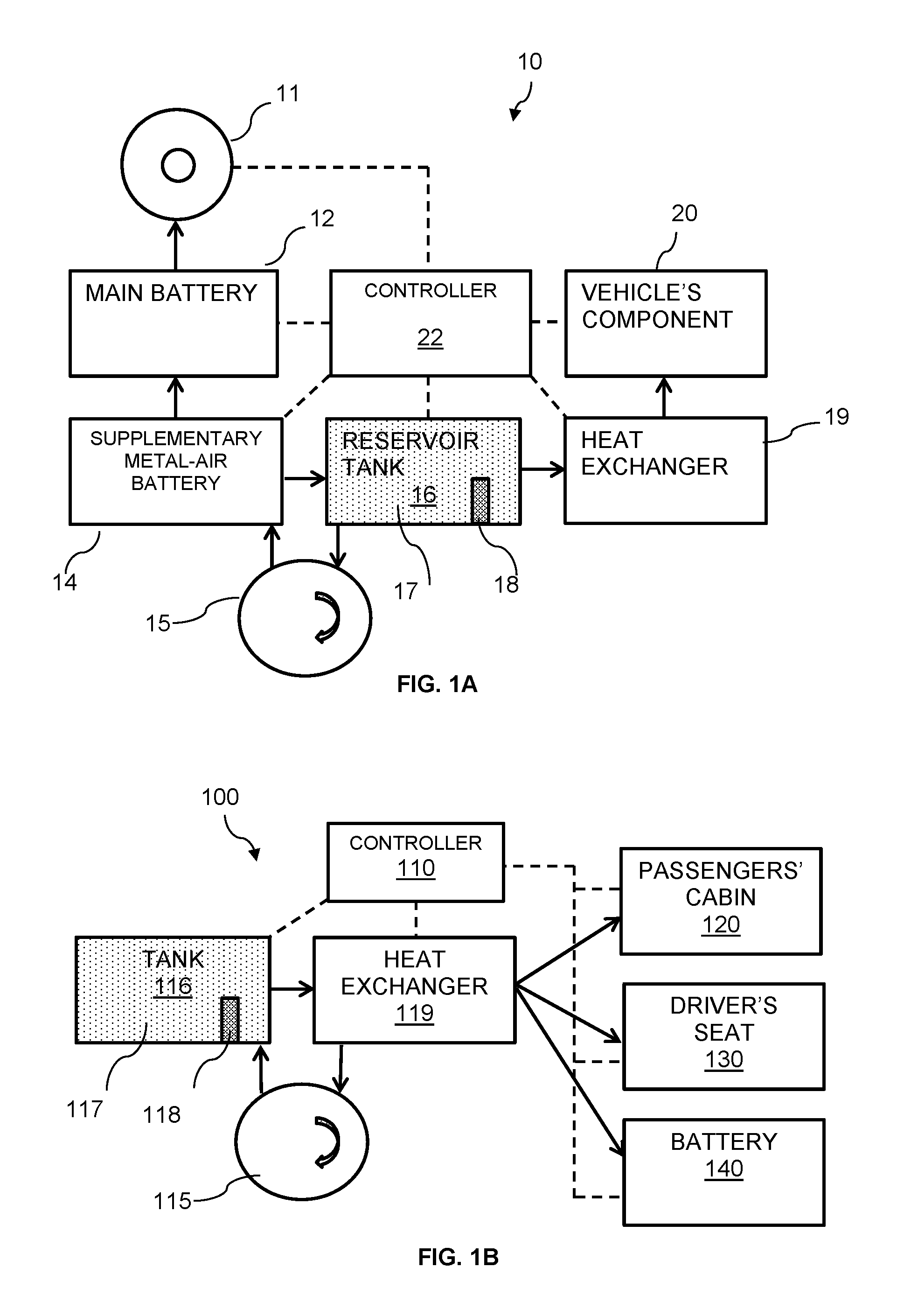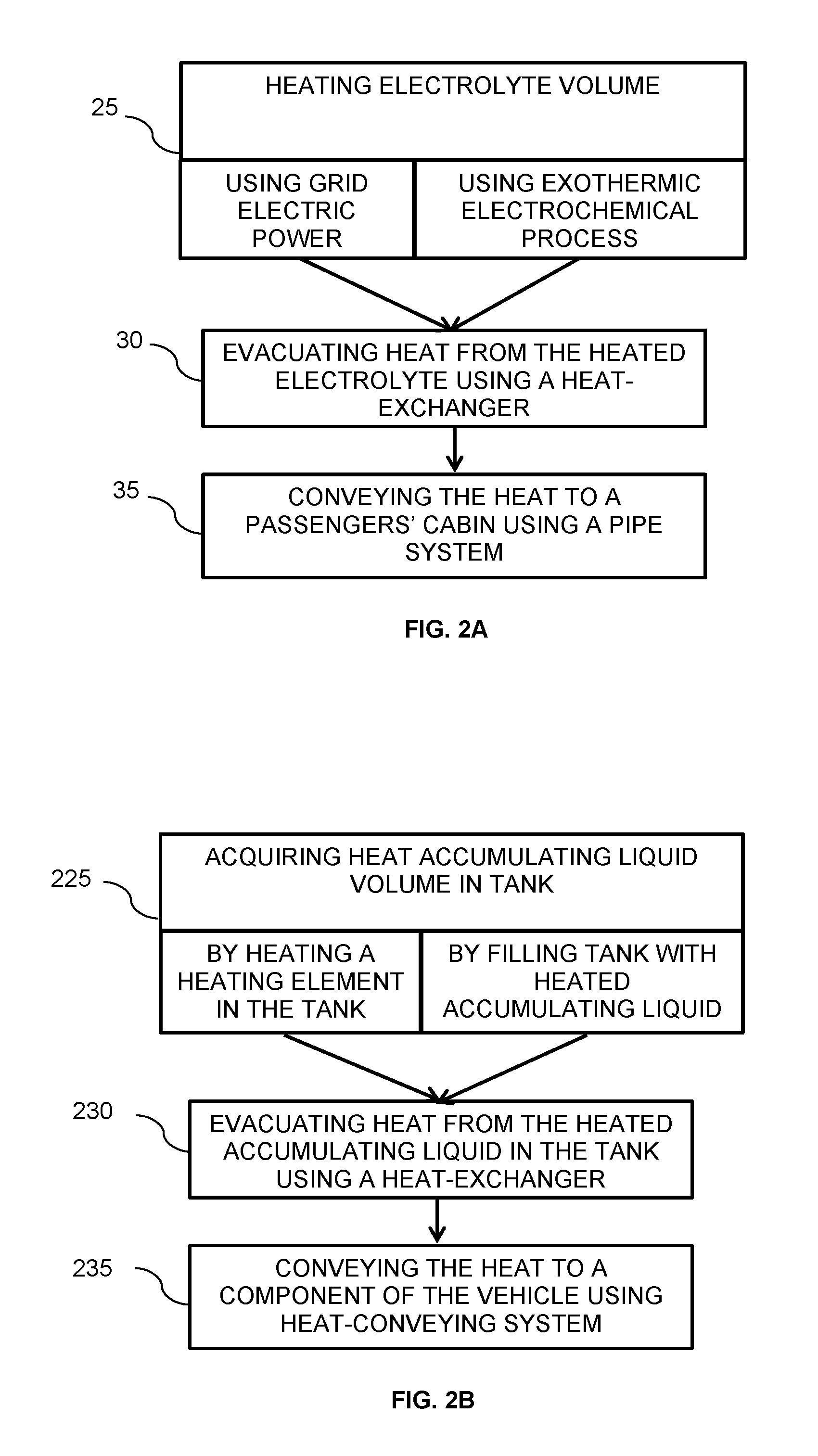Thermal battery for heating vehicles
a technology for heating vehicles and batteries, applied in vehicle heating/cooling devices, heat storage plants, electric devices, etc., can solve the problems of reducing the traveling range of vehicles, conventional batteries used in electric vehicles, and metal air batteries known in the art still lack sufficient power to operate as a sole power supplier of electric vehicles, etc., to achieve the effect of fast loading of heat energy into the tank
- Summary
- Abstract
- Description
- Claims
- Application Information
AI Technical Summary
Benefits of technology
Problems solved by technology
Method used
Image
Examples
Embodiment Construction
[0015]In the following detailed description, numerous specific details are set forth in order to provide a thorough understanding of the invention. However, it will be understood by those skilled in the art that the present invention may be practiced without these specific details. In other instances, well-known methods, procedures, and components have not been described in detail so as not to obscure the present invention.
[0016]One known source of electric power for an electric vehicle is a lithium-based battery, which has many benefits. Yet, the specific cost of a residual energy unit (e.g., KWh) stored in a lithium-based battery is relatively high. Some aspects of the invention may be related to a system for extending the traveling range of an electric vehicle (e.g., an electric car) by adding a supplementary, metal-air, battery having a relatively low specific cost of energy unit, to an (existing) main rechargeable lithium-based battery.
[0017]The metal-air battery may be used fo...
PUM
| Property | Measurement | Unit |
|---|---|---|
| temperature | aaaaa | aaaaa |
| temperature | aaaaa | aaaaa |
| temperature | aaaaa | aaaaa |
Abstract
Description
Claims
Application Information
 Login to View More
Login to View More - R&D
- Intellectual Property
- Life Sciences
- Materials
- Tech Scout
- Unparalleled Data Quality
- Higher Quality Content
- 60% Fewer Hallucinations
Browse by: Latest US Patents, China's latest patents, Technical Efficacy Thesaurus, Application Domain, Technology Topic, Popular Technical Reports.
© 2025 PatSnap. All rights reserved.Legal|Privacy policy|Modern Slavery Act Transparency Statement|Sitemap|About US| Contact US: help@patsnap.com



